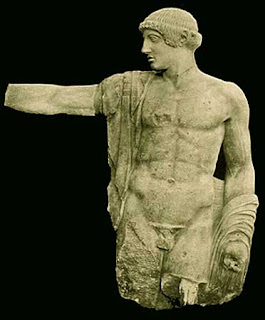Saturday was not only a full moon, but it was also calli, or "house," the fifth day of the Aztec calendar. To the Mayans, who used a vaguely similar glyph for a different word (much like modern Chinese and Japanese use a similar written language to represent two very different spoken languages), saturday was the day called akbal, or "night."
Most days of the Aztec calendar have nearly identical Maya equivalents (day seven is the deer; mazatl to the Aztec, manik to the Maya, or day eighteen, flint knife, tecpatl in Aztec, etznab in Maya) but calli/akbal is one of the few that does not, on the surface, seem to be connect.
What could "house" and "night" have in common? In the Mesoamerican calendrical system, each of the twenty day signs is ruled by a certain deity, and "house," day five, is ruled by a god the Aztecs knew as Tepeyollotl, "the heart of the mountain." He was a jaguar-skinned earth god, who presided over caves and earthquakes and other cthonic manifestations of the hidden deeps.
To the Maya also, the jaguar represented that which is hidden by darkness: the sun was believed to venture into Xibalba, the underworld, at night, much like how Apollo's chariot entered Hades below the rim of the sea as day fell on ancient Greece.
But unlike the Grecian sun, the Mayan sun transformed into a jaguar, and like the great nocturnal predator of the Latin-American isthmus, it spent the nighttime hunting in the underworld, and the spots of its coat were the stars of the heavens themselves.
So, calli is clearly the "house" of the underworld, or perhaps all six houses of Xibalba, where the Mayan hero twins were tested and survived the trials of the lords of death, as told in the creation myth of the Popol Vuh.
With such a thoroughly cthonic pedigree, its hard not to connect calli with the (other!) Indian pantheon, specifically another "night" incarnate, the terrifying goddess Kali, destroyer of illusions, ten-armed mistress of death in the Hindu tradition.
Could a tiny linguistic fragment that represented the mind-peeling fear and awe of night and death and darkness have travelled across 20,000 miles and 20,000 years from West Asia, over the land bridge, to finally come to a rest in the Yucatan? I'll leave that one to the linguists to figure out.







No comments:
Post a Comment